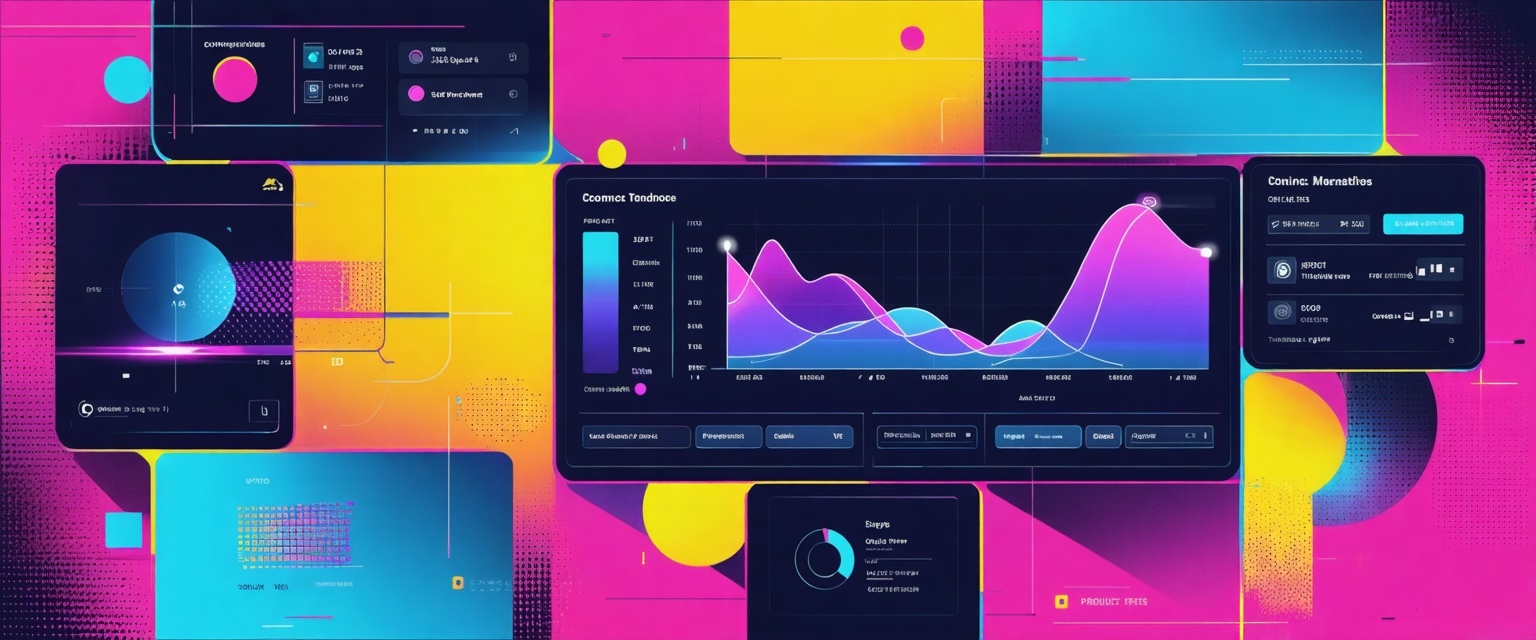Deciding between build or buy for agentic AI? Discover 5 key criteria to help you make the best choice for your organisation's deployment strategy.
What is the Best Way to Deploy Agentic AI: Build or Buy?
Your organization is ready to deploy agentic AI, but you're struggling to weigh conflicting factors. Should you build custom agents for maximum control, or buy a platform for faster deployment?
You're comparing costs against flexibility, evaluating vendor risks against development timelines, trying to balance stakeholder demands while ensuring the solution works in your complex enterprise environment.
Understanding these trade-offs becomes critical when stakeholder priorities conflict and technical requirements seem to change daily. The wrong choice can mean months of delays, budget overruns, or systems that never quite work as intended.
In this guide, we'll examine the build vs. buy decision through systematic comparisons across key dimensions, providing a practical framework to help you make the right choice for your organization.
Criteria #1: Integration Complexity and Decision Framework
Integration complexity drives AI agent success more than model sophistication. Your CRM, ERP, databases, and cloud storage must feed agents clean data and accept their outputs seamlessly. This integration readiness, not agent brilliance, determines whether your deployment delivers ROI or stalls in development.
Buy If you Need Standard Integrations and Quick Connectivity
Vendor platforms connect to common enterprise systems right out of the box, cutting weeks of API development and authentication work.
These connectors operate through unified orchestration layers, which means a support agent can pull order history from ERP, create ServiceNow tickets, and message customers through Teams without any custom code.
Most enterprises need multiple data sources per agent, making pre-packaged connectivity essential for fast rollouts. Vendor solutions also include proven error handling, logging, and security frameworks, reducing risk for customer service automation and reporting workflows.
When your data lives in standard SaaS platforms and follows typical business processes, buying cuts deployment timelines significantly.
The catch is when your workflows don't match standard templates. Custom systems often require substantial connector modifications, which eliminates the speed advantage that made buying attractive in the first place.
Build If You Need Deep Custom Integration And Proprietary Workflows
Custom development becomes necessary when your data infrastructure doesn't align with standard templates. Legacy mainframes, proprietary order systems, and domain-specific formats rarely match vendor connector capabilities.
Building custom gives you direct connections that work exactly with your data formats, messaging systems, and security rules, especially critical where compliance standards differ from mainstream defaults.
Direct pipeline control matters when competitive advantage lives in unique workflows. You design exactly how data gets extracted, transformed, and stored. When compliance rules change, you modify code immediately rather than waiting for vendor updates.
However, this control comes with ongoing development overhead. Therefore, every system connection requires custom code and maintenance when APIs evolve. Building makes sense when your integration requirements are so specialized that vendor solutions would need extensive customization anyway.
Criteria #2: Resource Requirements and Technical Complexity
The build-versus-buy decision shapes every resource call you'll make for the AI system's life, from engineers you hire to servers you maintain and upgrades you chase. Initial development is only the first bill; maintenance, scaling, and adaptation are permanent line items.
Buy If You Need Predictable Costs and Managed Infrastructure
When you license a commercial platform, you're renting a fully staffed data operations team. Subscription pricing turns capital expenditure into operational expense, letting you forecast spend with the same certainty as your cloud bill.
Vendors amortize R&D and infrastructure costs across hundreds of customers, so you avoid the sunk cost of building a custom stack. The platform owner manages hosting, patching, and model updates, which means your internal engineers stay focused on workflow logic rather than Kubernetes clusters.
Modern platforms come with low-code tooling and built-in security controls, cutting the need for specialized AI expertise. When a connector to Salesforce or Snowflake breaks, the vendor fixes it for every customer at once.
This approach delivers cost stability. You trade unknowns, hiring spikes, emergency refactors, surprise hardware upgrades, for a flat monthly fee that includes automatic scaling and compliance updates. For teams that value budget certainty over absolute control, buying is the shortest path to an AI system that just works.
Build if You Need Full Control Over Costs and Technical Architecture
Sometimes predictable isn't cheap enough. If your agents will process proprietary data on isolated networks, or if licensing fees balloon with document volume, owning the stack can win long term.
Building in-house means heavier up-front investment: salaries for data scientists, ML engineers, and integration specialists plus infrastructure to run training pipelines.
That investment buys architectural freedom. You can co-locate models with sensitive databases for latency or compliance, tune resource allocation to workloads that matter, and sidestep per-seat or per-API pricing that grows with usage.
Owning the codebase eliminates vendor roadmap risk—if your workflow demands a specialized transformer model or custom encryption layer, you implement it on your schedule.
Control lets you direct spending precisely. Instead of paying for generic features you'll never use, you funnel budget into connections that save the most manual work. Over time, avoiding recurring license fees can outpace early spend, especially for high-volume or specialized workflows.
However, you're responsible for every patch, model retrain, and scale event. If you have the expertise and strategic reason to differentiate on infrastructure, building delivers an ownership advantage no subscription can match.
Criteria #3: Speed to Deployment and Integration Timeline
Data infrastructure complexity directly impacts deployment speed. Pre-built connectors can cut months from your timeline, while custom solutions require careful planning but prevent costly rework later. Agent-specific challenges like multi-system coordination and performance validation add layers of complexity that affect both approaches differently.
Buy if You Need Rapid Deployment for Standard Use Cases
Commercial platforms deploy quickly because vendors have already solved standard connection challenges. Pre-built connectors to common enterprise systems move you from proof-of-concept to production in weeks rather than quarters.
Low-code configuration tools handle setup without custom coding. These connectors are tested across thousands of deployments, giving you proven algorithms, security protocols, and vendor expertise. Integration becomes configuration work rather than development.
Vendor platforms include agent orchestration frameworks that handle multi-agent coordination, state management, and failure recovery automatically. This eliminates months of custom development for agent communication protocols.
Performance validation still requires extensive testing, though. Plus, you need to verify that agents perform at scale across your specific data volumes and user loads.
This becomes critical when security approvals and compliance reviews can add weeks regardless of technical readiness. Teams also need time to learn new agent workflows and approval processes.
Build If You Need Custom Integration Done Right the First Time
Custom development pays off when you manage proprietary workflows, legacy applications, or compliance requirements that standard connectors can't handle. Enterprise builds typically require extended timelines because engineers must design and test point-to-point connections across complex environments.
Building custom means developing agent coordination from scratch. Multi-agent systems require custom orchestration layers, state synchronization protocols, and failure recovery processes. This extends timelines significantly but delivers exactly the agent behavior your workflows require.
Integration testing becomes more complex with custom solutions. You must validate not just individual system connections but how agents coordinate under various load conditions and failure scenarios. This comprehensive testing exposes performance bottlenecks before production.
Phased rollouts become essential. You start with limited user groups, validate performance under real conditions, then gradually expand. This prevents expensive rollbacks but extends deployment timelines.
Therefore, building custom means accepting longer initial timelines to avoid expensive rework cycles while ensuring your teams are prepared for custom agent workflows.
Criteria #4: Long-term Scalability and Maintenance
Your build vs. buy choice determines how your AI implementation evolves with your business. Each new use case multiplies connection complexity, and every connector becomes another point requiring patches, security updates, and monitoring.
Buy If You Need Vendor-Managed Updates and Market-Driven Innovation
Commercial platforms handle growth maintenance automatically. Cloud-native infrastructure scales without manual intervention, while vendors manage security patches, feature updates, and regulatory compliance. Your team stays focused on business outcomes rather than infrastructure management.
When vendors add new system connections, you get them without development work or sprint planning. Shared costs across thousands of customers drive innovation you'd never fund internally. One subscription covers compliance tooling, logging, and performance optimization that would otherwise consume months of engineering time.
Knowledge transfer risks disappear because vendor documentation handles institutional memory. When team members leave, new hires learn platform configurations rather than custom codebases.
However, you depend entirely on vendor roadmaps and update schedules, which may not align with your business priorities.
Build If You Need Complete Control Over System Evolution
Building your own stack pays off when you need complete architectural control. You dictate scaling strategy, whether that's GPU clusters for heavy reasoning, edge deployments for low latency, or on-premises systems for data residency requirements.
You decide when to refactor pipelines, pause upgrades during critical business periods, or prioritize features that vendors never roadmap. This autonomy enables optimization for proprietary data structures and specialized compliance requirements where vendor updates lag behind regulatory changes.
The trade-off is ongoing investment in specialized talent. You need AI engineers, DevOps specialists, and security experts to maintain complex integrations. When key people leave, you risk losing critical knowledge about custom architectures and system connections.
If you have the technical resources and your workflows represent a competitive advantage, building delivers faster adaptation than any vendor timeline. Otherwise, maintenance overhead can quickly outweigh control benefits.
Criteria #5: Control & Customization
How much control you need over agent behavior and workflows often determines whether vendor platforms can meet your strategic requirements. The level of customization depth directly impacts your ability to differentiate through unique agent capabilities and respond to changing business needs.
Buy If You Need Proven Frameworks with Reasonable Flexibility
Commercial platforms offer substantial customization within their frameworks. Modern platforms like Microsoft AutoGen and Salesforce Agentforce allow you to configure agent behavior, define custom workflows, and integrate proprietary business rules without rebuilding core infrastructure.
You can customize agent responses, set up approval workflows, and define escalation procedures while leveraging vendor-provided security, monitoring, and orchestration layers. Many platforms include visual workflow builders and configuration tools that let business users modify agent behavior without developer intervention.
Platform customization works well when your competitive advantage comes from execution speed rather than proprietary AI capabilities. You get proven frameworks that handle edge cases, error recovery, and scaling challenges while maintaining enough flexibility for most business requirements.
The limitation emerges when your differentiation depends on unique agent behaviors that vendor platforms don't support. Custom reasoning chains, specialized decision trees, or proprietary algorithms often require more control than platform configurations allow.
Build If You Need Complete Control Over Agent Behavior
Custom development becomes essential when your competitive advantage lives in how agents think and act. You control every aspect of agent reasoning, from decision-making algorithms to response generation and learning mechanisms.
Building custom means you can implement specialized agent architectures that vendor platforms don't offer. Whether that's custom multi-agent coordination patterns, proprietary knowledge integration methods, or industry-specific reasoning chains, you have complete freedom to innovate.
You also control the pace of evolution. When market conditions change or new opportunities emerge, you can modify agent behavior immediately rather than waiting for vendor updates or submitting feature requests. This agility becomes critical in fast-moving industries where agent capabilities directly impact competitive positioning.
However, complete control means complete responsibility. You're building agent frameworks that vendors have spent years perfecting. Every edge case, error condition, and scaling challenge becomes your engineering team's problem to solve.
Deploy Agentic AI That Works in Your Enterprise Environment
You can use Datagrid to accelerate your agentic AI deployment while addressing the core challenges across all five criteria we've examined.
Our platform transforms the traditional build vs. buy equation by delivering enterprise-grade AI agents with the integration depth you need.
Datagrid delivers intelligent agents that work within your existing infrastructure while offering the customization capabilities that drive competitive advantage. This approach eliminates the technical debt of building while solving the integration limitations that plague most vendor platforms.
- 100+ platform integrations reduce deployment complexity: Connect agents to your existing systems without months of custom API work, whether you're building or buying
- Pre-built connectors eliminate the biggest bottleneck: Access all your data sources instantly, removing the integration barriers that kill most agentic AI projects
- Custom agents on proven infrastructure: Get the specificity of building with the reliability of buying through agents that learn your exact workflows
- Enterprise-grade validation built in: Handle compliance and data governance automatically, solving the oversight challenges that derail both approaches
Ready to evaluate how integration-first platforms can accelerate your agentic AI adoption?
Create a free Datagrid account













